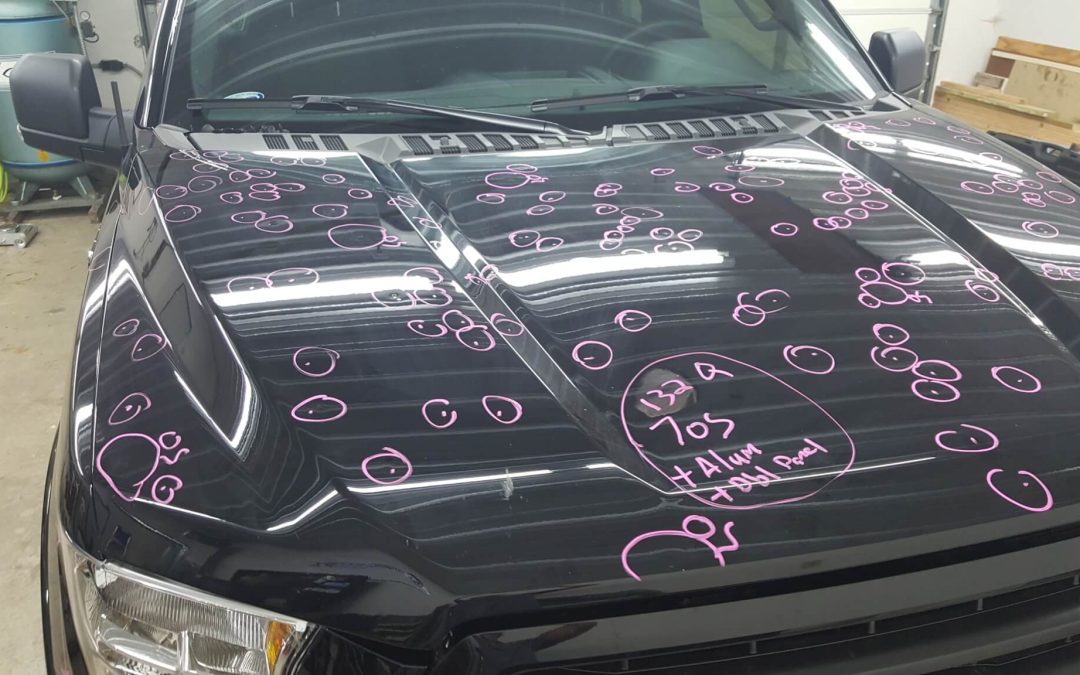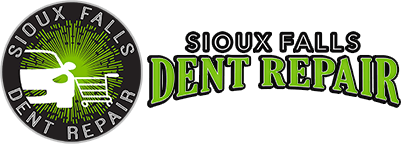
How do we do a Hail Damage Estimate?
Have you ever wondered how a hail estimate on your vehicle is written? How do body shops and paintless dent repair technicians come up with the numbers that they do? Here’s a short video on a couple of very common questions and just a basic example of how we go about pricing hail damage repairs! The vehicle used in this example was a 2017 Ford F-150 with only 1,700 miles in it! This vehicle is made completely out of aluminum and we have part of it taken apart already for this example.
First off we start by bringing the damaged vehicle inside our shop for inspection. Next we clean the vehicle of any debris and dirt, a clean surface insures us the best possible reflection, this allows us to see every minor detail of the damage. After the vehicle is cleaned off we bring out a specialized Paintless Dent Repair style light to see a high definition reflection of the damage, you can see quite a bit in the natural shop lighting but nothing compares to a professional paintless dent repair light! The damage is then scanned over with the light from multiply angles by the estimator or technician to insure every possible angle is seen and inspected for damage, this insures a proper estimate! After a dent is discovered it is then inspected for the correct size by a sizing magnetic coin or a regular coin will work, the sizing is dime, nickel, quarter, half dollar and any dent that is bigger than a half dollar is marked as an Oversized dent. This probably one of the most over looked issue is sizing in the estimate, some estimators or Technicians will just guess on size and you would be surprised at how inaccurate that is, so make sure the technician uses sizing coins to insure proper size for your estimate! Any damage over a half dollar in size is then marked out as an “OS” or oversized dent on the panel, for the rest the average size of the dents is taken then the panel is then categorized as being that specific size overall. Next the number of dents is then added up along with the specific size of oversized dents is then calculated to figure out a number for the cost of the repairs. Panels of the vehicle require access to push the damage out, we do this by removing certain pieces of trim to access the backside of the damage, the hood insulator was removed prior to the video, it is a pad that protects the hood from heat and offers a form of sound deadening to dampen the sound of the engine, this is installed on the underside of the hood with specialized retaining clips. Also in the video the headlight and headlight trim pieces were previously removed from both fenders to allow the technician access to the fenders to push out the damage. Access is then shown for both the fenders and the bottom side of the hood to give you a little idea of how the technician pushes the damage out.
If you have any questions regarding damage to your vehicle or have damage yourself that you would like repaired please give us a call at: (605) 595-4061
Thanks for watching!
